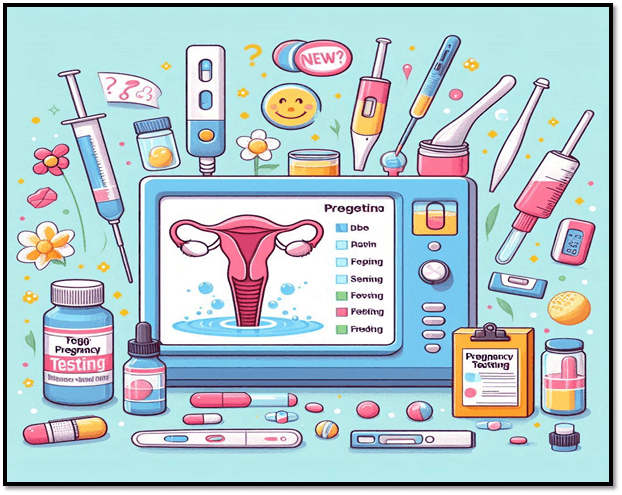The Evolving Pregnancy Testing Market: What’s New?
Published Date: 12 Oct 2024
Overview
This market has expanded in the last few years due to shifts in buyers’ behavior, innovations in this field, and the increasing awareness of reproductive health and fertility problems in society. Because purchases are made according to today’s consumers’ preferences for speed, accuracy, and convenience, there is a high demand for more precise at-home pregnancy tests that are digital. In conjunction with other sustainability issues, the sector is witnessing an increase in reusable and sustainable products apart from advancements in technology. Pregnancy testing is increasingly being used as a key method of regulating fertility and family planning because of rising concerns around reproductive health precipitated by education and enlightening on the same. This indicates that prenatal testing should gradually become more personalized, less expensive, and more linked to a wider range of health screening services in the future, allowing people to exert levels of control over functioning fertility that have never been seen before.

1. Technological Development
• Digital Tests: Thanks to the latest innovations, when used, instead of looking at colored lines, one can see results on a screen, thus avoiding cases where someone may confuse the outcomes. Such tests can help to determine the possible pregnancy advancement and often have such elements as counts down timers.
• Integration with Smartphones: Getting pregnant and being pregnant are two worlds apart – this is the idea behind the latest pregnancy tests, which can be connected to smartphone apps so that customers can get more functions. As such, these applications assist in tracking menstrual cycles, ovulation, and results sharing with medical practitioners; thus helping in supporting better reproductive health.
2. Test Types
• Home Pregnancy Tests (HPTs): Some HPTs are highly accurate enough to detect low levels of the hormone, hCG, several days before the beginning of a woman’s typical period. This has made it more attractive to people who wish to know this early.
• Blood vs. Urine Tests: Serum or whole blood pregnancy tests performed in clinics outperform the current highly marketable home urine pregnancy tests. One disadvantage of urine tests is that they cannot identify pregnancy as early as blood tests can, and do not give a quantitative readout.
3. Point-of-Care Testing
• Pregnancy testing procedures in healthcare facilities are evolving thanks to point-of-care testing. These tests allow those involved in the delivery of healthcare to receive results within minutes and support the patient by providing them with feedback quickly improving the experience for the patient.
4. Market Trends
• Increasing Demand: Specifically, the inhabitants of developing countries pay increased attention to family planning and the issue of reproductive health more and more. Since now pregnancy tests have become more affordable due to the increasing demand for them and new markets have appeared for this product.
• Sustainability: Many organizations are changing their ways to ways because customers are becoming more environmentally conscious. Concerning the aims of global sustainability, it is about the development of biodegradable test parts and the use of naturally degrading packaging.
5. Consumer Education
• Companies, therefore, focus considerably on consumer awareness through the provision of aids like videos, frequently asked questions, and guidelines on the administration of pregnancy tests. In addition, because these teaching tools respond to clearly identifiable ordinary worries and misapprehensions, they help to reduce testing stress. Consumer autonomy is increased by the fact that businesses offer easily understandable and accessible information that can enable a consumer to make informed choices on his/her reproductive health business. Thus, the focus promotes educated decisions and reduces screw factor and apprehension of tests.
6. Modifications to Regulations
• An important thing to know is that pregnancy tests can be regulated at any time. The regulatory agencies are intervening more and more in the advertisement and sales of these products by concentrating more and more on approval and certification of the products and the efficiency and safety in use. Manufacturers must conform to such standards to maintain integrity for their customers.
7. Global Market Growth: Pregnancy tests are touching new heights in terms of market growth due to some factors such as an increase in distribution channels, an increase in reproductive health check-ups, technological updates, and many more from across the globe. In addition, it has emerged that a lot of money is being channelled into emerging markets all of which are helping to make these important medical supplies more available.
8. Influence of Social Media: The change of the landscape through social networks and online communities is also affecting how customers perceive and choose pregnancy tests. Customers pass recommendations, guidance, and feedback and this influences the purchases they make. Companies to expand consumers’ attention and develop trust are using this social proof.
9. Future Innovations: The recent discovery of saliva-based tests might mean that invasive pregnancy tests in the future will be a thing of the past men. These new technologies might be quicker, less invasive, and more feasibly employed to determine pregnancy or change pregnancy detection and measurement’s prevalence for lots of people.
Conclusion
There is a notable development in the pregnancy test business, primarily as people obtain digital and home pregnancy tests that offer highly accurate, nearly immediate results. However, following customer demands for sustainability, similar test designs also gradually increase their ecological nature. Sex now has become wiser since the population has increased their awareness level about reproductive health. Moreover, the development of new conception tests and hormonal level diagnostics contributes to the precise identification of conception and allows outlooks on personalized counseling and health care and conception perspectives. Advantages of these changes include: There has been a rise in the level of autonomy, confidentiality, and comfort when it comes to reproductive health.
Maximize your value and knowledge with our 5 Reports-in-1 Bundle - over 40% off!
Our analysts are ready to help you immediately.
